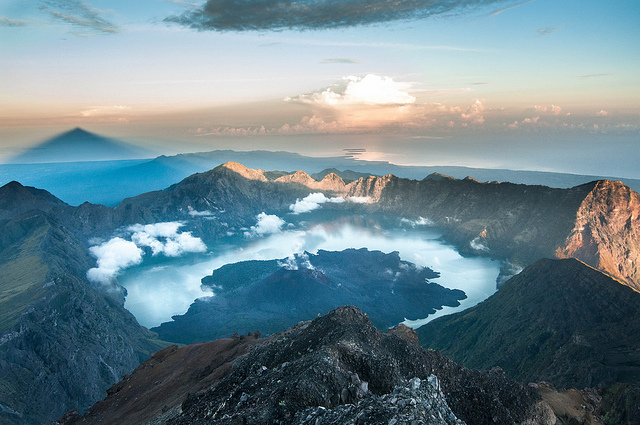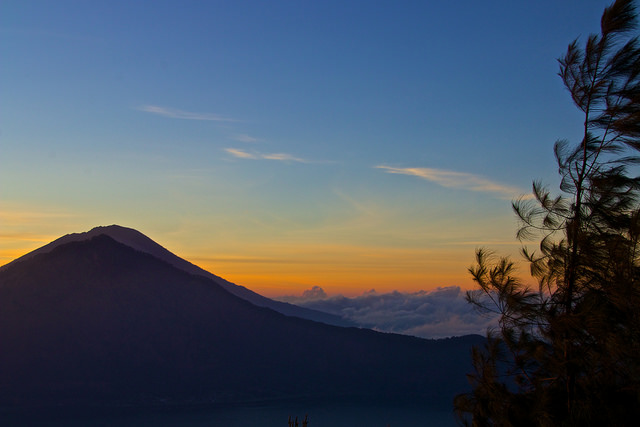Last week, we put together a little guide on which volcanos you should climb in Bali, depending on your fitness level, tolerance for leg-soreness and also, how much time you want to dedicate to climbing.
This week, we bring you tips for those of you who have chosen which Bali volcano you’re going to conquer. That is, the dos and don’ts before the climb, during the climb and after the climb—all in the aim to make your Bali volcano trekking experience as epic as possible.
BEFORE THE CLIMB
Do:
- Organize a guide and do thorough research on the company that the guide is working for. Technically, experienced climbers should be able to go guideless, but it will end up being a lot more hassle than it’s worth. For most Bali volcanoes, there will be individuals at the foot of the mountain telling you that it’s not possible to climb without a guide.
- Undertake activities that improve your fitness, or at least maintain it. Even the two-hour hike to Mt. Batur summit can leave you out of breath as there are some difficult tanjakans to tackle during the journey.
- Make sure that you pack appropriately, and divide your list into “must haves” and “nice-to-haves”. Some examples of “must-haves” include water (people recommend about two liters per day), jacket, just-in-case rain gears, hat, headlamp/torch, sunscreen, camera, high-energy snacks,hand-sanitizers, wet wipes, band-aids, and insect-repellants. Some examples of “nice to haves” include ear-plugs, trekking sticks, extra socks, gloves, a notebook (for those random bursts of inspiration), pain-killers, beverages to “reward” you at the top, and for those of you climbing Mt. Rinjani, swimwear if you want to dip into the lake and/or hot springs.
- Make sure you have decent footwear. You cannot climb a volcano in flip-flops. Hiking boots are best because some of the terrains you will pass may be rough or slippery, but if you can’t get hold of one at least choose a comfortable footwear with a decent grip.
Don’t:
- Hit the bars/clubs the night before. It seems like an obvious advice but if you’re on holiday you might feel like you’re invincible and can do anything. Well, you’ll regret it when you start your ascent.
- Expect that the climb will be smooth-sailing. It might be—but more likely you’ll face some tough parts and you might want to give up. Just expect that there will be difficulties and mentally prepare yourself to get through them.
- Do anything the week before the climb that could put you at risk of a leg injury. You’ve already committed to climbing the volcano so it would be a shame to have to bail due to something like this. Obviously you can’t prevent it 100%, but the odds of an injury is greater if you’re careless right?

This little fella is clearly excited about Mount Batur, and you should be too!
Photo: Flickr
Photo: Flickr
DURING THE CLIMB
Do:
- Take it a few steps at a time. The first 10% of the climb is probably going to be the hardest. You might feel like you have climbed for hours but when you ask your guide how far to go, he says that you’re not even halfway. Yes, you’re climbing to get to the summit, but try and enjoy the journey to get there, or it’ll just feel like another daunting task (and climbing a volcano in Bali should NEVER be seen as a task).
- Respect the mountains. All of the volcanos we mention are of religious and cultural significance so do bear this in mind and exercise your cultural-sensitivity muscle on throughout the climb.
- Get to know your guide. While your trek may seem difficult, for most of these guides, this is how they make a living. One of the things that volcano climbers have reported is how much they enjoyed finding out about their guide’s day-to-day life (and then having a whole newfound respect for them because this thing that they are struggling to do is something that their guide has to do almost every day).
- Take regular rests as you need to throughout the climb. This will make you enjoy the climb even more and also gives you time to take epic photos!
- Drink lots of water. Need we elaborate more on the benefits of hydration and the unpleasantness of dehydration?
Don’t:
- Provoke the monkeys. These creatures can be quite nakal and if you annoy them they will probably steal your food and any loose items that are within their sights.
- Ignore what your body is telling you. By all means most of the negative talk and the “I just want to flag this after all” feeling is probably more mental than physical, but when physical pain starts to kick in, listen to it.

Beware of monkeys — they can turn scary if you provoke them
Photo: Flickr

And this is why we climb volcanos for fun
Photo: Flickr
Photo: Flickr
AFTER THE CLIMB
Do:
- Reward yourself! We recommend getting a massage to ease up on all that body-soreness — but you might have another relaxation ritual that you prefer. Whatever it is, you should feel free to indulge because you have just climbed a volcano!
- Book yourself into an accommodation with a nice, comfortable bed. You want at least a night of rest before moving on with your journey or tackling another challenging holiday activity.
- Tip your guide (and porters, if you decide to use them). These men don’t make very much for their continuous rigorous climbs.
Don’t:
- Go for a 10K run the day after. Unless you’re deliberately trying to injure yourself. If you really must do some exercise, opt for a yoga session instead.

Now that you’ve climbed a volcano, it’s time for some R&R folks!
Photo: Flickr
Photo at the top: Flickr





Reader Interactions